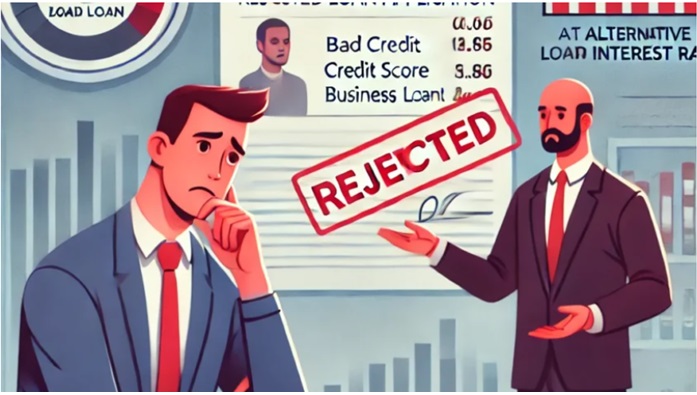Getting a business loan with bad credit can be challenging, but it is not impossible. Lenders often look beyond credit scores by considering factors like cash flow, business plans, and collateral when approving loans. Understanding what lenders prioritize can improve the chances of securing funding.
Small business owners with poor credit should explore options such as alternative lenders, secured loans, and government-backed programs tailored to those with credit issues. Taking steps to strengthen their overall financial profile can also make a difference in loan approval.
This guide will outline practical strategies and resources to help business owners navigate the loan process despite bad credit. Knowing where to apply and how to prepare increases the likelihood of obtaining the necessary capital.
Understanding Business Loans for Bad Credit
Business loans for those with poor credit require specific criteria and options. Lenders often adjust their requirements and loan types to accommodate higher risks. Knowing what defines bad credit, typical loan types available, and their eligibility rules can help borrowers navigate this process effectively.
What Qualifies as Bad Credit for Business Loans
Bad credit typically means a credit score below 600, but lenders may have different thresholds. Scores under 580 are usually viewed as high-risk. Factors like late payments, defaults, bankruptcies, or high debt-to-income ratios contribute to a poor credit profile. Understanding how to get a business loan with bad credit is crucial, as lenders also look beyond credit scores. They consider cash flow, business history, and industry risks. A low credit score combined with weak financials often leads to higher interest rates or loan refusals.
Types of Business Loans for Low Credit Scores
Common loan options for bad credit borrowers include:
- Microloans: Smaller amounts, usually under $50,000, with flexible criteria.
- Merchant Cash Advances: Repayment tied to daily credit card sales, high fees apply.
- Equipment Financing: Secured by equipment, reducing lender risk.
- Invoice Financing: Uses outstanding invoices as collateral.
Traditional bank loans are rare for poor credit. Online lenders often specialize in higher-risk loans but charge higher interest.
Common Eligibility Requirements
Eligibility varies but generally includes:
- Minimum 12 months in business.
- Demonstrated monthly revenue, often over $5,000.
- Personal and business credit scores may be evaluated.
- Proof of business licenses and tax returns.
Collateral might be required, especially for higher amounts. Lenders also expect transparent financial statements to assess risk accurately.
Steps to Secure a Business Loan With Bad Credit
Securing a business loan with poor credit requires strategic preparation and exploring non-traditional options. Focusing on credit improvement, choosing the right lenders, gathering necessary documents, and using collateral or co-signers can improve approval chances.
Improving Your Business Credit Profile
The first step is to assess and improve the business credit score. Regularly checking credit reports helps identify and dispute inaccuracies that may unfairly lower the score.
Paying bills on time and reducing outstanding debts will gradually raise the credit rating. Establishing trade lines with suppliers who report payments to credit bureaus also builds a positive credit history.
Small secured credit cards or vendor financing can demonstrate responsible credit use. These efforts show lenders the business is actively working to manage its finances better.
Identifying Alternative Lenders
Traditional banks often have strict credit requirements, so seeking alternative lenders is critical. Options include online lenders, community development financial institutions (CDFIs), and microlenders.
Online lenders typically offer faster approvals but higher interest rates. CDFIs focus on underserved markets and may have more flexible criteria. Microlenders provide smaller loan amounts and emphasize community support.
It’s important to compare terms such as interest rates, fees, and repayment schedules. Reading reviews and requesting clear loan estimates prevents surprises. Alternative lenders often place more weight on current cash flow than credit score alone.
Preparing Essential Documentation
Comprehensive documentation supports the loan application. Key items include recent tax returns, bank statements, profit and loss statements, and a detailed business plan.
The business plan should explain how the loan proceeds will be used and how the loan will be repaid. Demonstrating stable or growing revenue reassures lenders.
Organizing documents in advance saves time and shows professionalism. Having these papers ready helps respond quickly to lender requests, increasing the chances of approval.
Exploring Collateral and Co-Signer Options
Offering collateral can offset credit risk for lenders. Common collateral includes business equipment, inventory, or real estate. Collateral reduces interest rates and improves approval odds by providing lender security.
Using a co-signer with strong credit can also help. A co-signer agrees to repay if the borrower defaults, which lowers lender risk. However, it puts the co-signer’s credit on the line. Both parties should clearly understand this responsibility before proceeding.


Leave a Reply